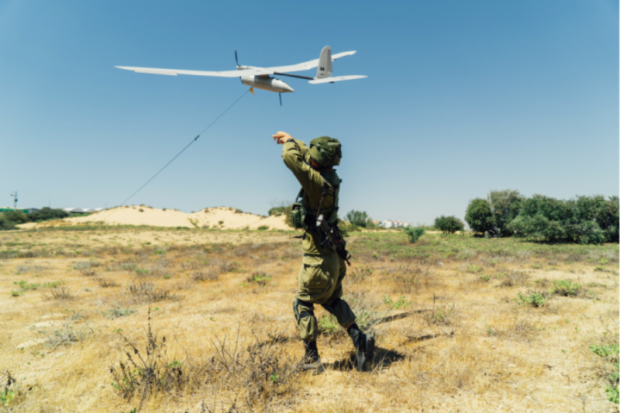Israel is working on a system that will enable ground forces to use voice commands for unmanned systems.
Technology development efforts have taken place over the last two years as part of a broader process of developing new tools for the Israel Defense Forces.
An official with the Defense Ministry’s Directorate of Defense Research and Development said the system is about voice dialogue between humans and machines.
“It’s called Casper, and we wanted the system to be a member of the team: a hybrid team of human and nonhuman operating and working together,”
the official told Defense News, speaking on the condition of anonymity due to security reasons. This kind of partnering is often called manned-unmanned teaming, or MUM-T.
“To make this happen, we needed the drone as a team member so I can say ‘go forward’ or ‘cover me,’ and the drone can say it observes an objective 90 degrees from us, for example,” the official added.
The directorate’s voice command system is being designed for use with a variety of unmanned systems, but it can currently only understand Hebrew.
The official said 80% of the technology’s capabilities involve controlling a drone’s basic abilities, such as lifting off and flying to a certain height, while the remaining 20% is focused on commanding a drone to investigate or detect targets.
“We understood we need a new approach of operating systems in a battlefield,” the official said, noting that these kinds of voice commands already exist in the civilian world. “On a battlefield, you need to be aware of surroundings, you need to look forward and have your hands on a weapon and not on a control [screen].”
The official added that the new technology is meant to make it easier for forces to identify and investigate targets and well as close the sensor-to-shooter loop — the time it takes for different systems to communicate with each other.
“I can tell Casper to go investigate and close the loops once we have the real-time, accurate augmentation and the drone and the human on the same C4I system, [with] common language and the same map.”
The directorate is at the end of the first development phase and has employed about 20 commands to get there. The system is projected to be operational within the next several years.
The technology will first head to special units — “early adapters,” as the official put it — with the hope the larger ground force will take up the technology. The ministry has said this incremental approach is simply a building block toward larger manned-unmanned teaming that the IDF hopes to widely adopt in the future.
Local defense company Elbit Systems is already working on a government program called Edge of Tomorrow, which combines new technology to improve situational awareness. These technologies include augmented reality, artificial intelligence and other aspects of digitization for dismounted forces. This voice command effort, developed by Thirdeye Systems, could represent the next step for Edge of Tomorrow.
“On the battlefield, a few seconds can be the difference between life and death, between mission accomplishment and mission failure,” Bradley Bowman, senior director of the Center on Military and Political Power at the Foundation for Defense of Democracies, told Defense News. “Voice commands that eliminate the need to look down at a tablet can save vital time and increase soldier situational awareness. That will save lives.”
Retired Maj. Gen. Eitan Dangot, a former military secretary under three Israeli defense ministers who is now a senior fellow at the Jerusalem Institute for Strategy and Security, said the IDF has sought to improve its maneuver abilities for ground forces, especially to confront threats in urban areas. He noted this stems from lessons learned during the 2014 conflict in Gaza as well as anti-tank threats Israel faced in the 2006 war in Lebanon.
“We are now in a dramatic change in concept [with] the way we are giving tools to the local commanders from battalion level, all the way from brigade to company level, giving them opportunities to increase their area of fighting by … identifying targets when they need fire support — fire that comes from other vehicles,” he told Defense News.
The next step, the defense directorate official said, depends on several factors, such as determining “what is the right asset for the mission. Will it be a robot or drone or human being doing this all the time? [We need to] understand operational limits and abilities. This will require a strong AI engine to divide the resources and aim at the right place at the right time.”
Photo: Israel Defense Forces
Source: Defense News

